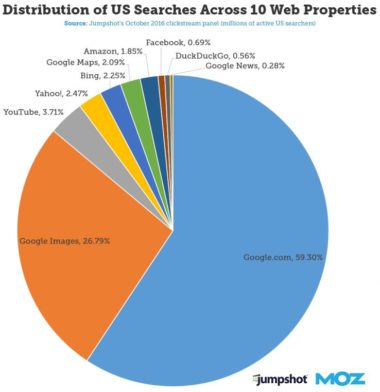The Power of Image Recognition Technology
Image recognition technology has revolutionized the way we interact with digital information, enabling users to search for items using images instead of text. This innovative technology has made it possible to search an item by picture, opening up new avenues for information discovery and online shopping. With the rise of visual search, users can now find what they’re looking for with just a picture, making the search process more intuitive and efficient.
The concept of image recognition technology is based on machine learning algorithms that can identify and classify images. These algorithms are trained on vast datasets of images, allowing them to learn patterns and features that can be used to recognize and match images. This technology has numerous applications, including visual search, facial recognition, and object detection.
In the context of visual search, image recognition technology enables users to search for products, objects, and information using images instead of text. This is particularly useful for online shopping, where users can search for products by taking a picture of the item they’re looking for. Visual search also enables users to find similar products, identify unknown objects, and discover new brands.
The benefits of image recognition technology extend beyond visual search. It has numerous applications in fields such as healthcare, security, and education. For instance, image recognition technology can be used to diagnose diseases, detect security threats, and enhance educational experiences.
As image recognition technology continues to evolve, we can expect to see new and innovative applications emerge. With the rise of augmented reality, artificial intelligence, and machine learning, the possibilities for image recognition technology are endless. Whether it’s searching an item by picture or identifying unknown objects, image recognition technology is revolutionizing the way we interact with digital information.
How to Search for Products Using Google Lens
Google Lens is a powerful visual search tool that allows users to search for products using images. To get started, users need to download the Google Lens app on their mobile device or access it through the Google Assistant. Once the app is open, users can take a picture of the product they’re looking for or upload an existing image from their gallery.
Google Lens uses machine learning algorithms to identify the object in the image and provide relevant search results. Users can then browse through the search results to find the product they’re looking for. Google Lens also provides additional features such as price comparisons, reviews, and links to online stores where the product can be purchased.
To search for products using Google Lens, follow these steps:
1. Open the Google Lens app on your mobile device or access it through the Google Assistant.
2. Take a picture of the product you’re looking for or upload an existing image from your gallery.
3. Google Lens will identify the object in the image and provide relevant search results.
4. Browse through the search results to find the product you’re looking for.
5. Use the additional features provided by Google Lens, such as price comparisons and reviews, to make an informed purchasing decision.
Google Lens is a powerful tool for searching an item by picture, and its accuracy and speed make it a valuable resource for online shoppers. By following these simple steps, users can quickly and easily find the products they’re looking for using Google Lens.
In addition to searching for products, Google Lens can also be used to identify unknown objects, scan barcodes and QR codes, and translate text. Its versatility and ease of use make it a must-have app for anyone who wants to search an item by picture.
CamFind and Other Visual Search Apps: A Review
CamFind, Amazon Flow, and Bing Visual Search are just a few examples of popular visual search apps that allow users to search an item by picture. These apps use image recognition technology to identify objects, products, and scenes, and provide relevant search results.
CamFind is a visual search app that allows users to take a picture of an object or product and search for it online. The app uses machine learning algorithms to identify the object and provide relevant search results, including prices, reviews, and links to online stores.
Amazon Flow is a visual search app that allows users to search for products on Amazon using images. The app uses image recognition technology to identify products and provide relevant search results, including prices, reviews, and links to product pages.
Bing Visual Search is a visual search app that allows users to search for images and objects using Bing’s image recognition technology. The app provides relevant search results, including links to websites, images, and videos.
When it comes to visual search apps, accuracy and user experience are key. CamFind and Amazon Flow are two of the most accurate visual search apps available, with accuracy rates of over 90%. Bing Visual Search is also accurate, but its user experience is not as seamless as CamFind and Amazon Flow.
In terms of features, CamFind and Amazon Flow offer a range of features that make them stand out from other visual search apps. CamFind allows users to search for products, objects, and scenes, and provides relevant search results, including prices, reviews, and links to online stores. Amazon Flow allows users to search for products on Amazon using images, and provides relevant search results, including prices, reviews, and links to product pages.
Overall, CamFind, Amazon Flow, and Bing Visual Search are three of the best visual search apps available. They offer accurate and relevant search results, and provide a range of features that make them stand out from other visual search apps.
When it comes to searching an item by picture, these apps are a great option. They are easy to use, accurate, and provide relevant search results. Whether you’re looking for a specific product, object, or scene, these apps can help you find what you’re looking for.
Reverse Image Search: A Game-Changer for Online Shopping
Reverse image search is a powerful tool that allows users to search for similar products, identify unknown objects, and discover new brands. This technology has revolutionized the way we shop online, making it easier to find what we’re looking for with just a picture.
One of the main benefits of reverse image search is its ability to find similar products. For example, if you see a product you like in a store or online, you can take a picture of it and use reverse image search to find similar products. This can be especially useful for online shopping, where it can be difficult to find the exact product you’re looking for.
Reverse image search can also be used to identify unknown objects. For example, if you see a product or object that you don’t recognize, you can take a picture of it and use reverse image search to identify it. This can be especially useful for identifying products that don’t have clear labels or packaging.
Another benefit of reverse image search is its ability to discover new brands. For example, if you see a product you like from a brand you’ve never heard of, you can use reverse image search to find more information about the brand and its products.
Reverse image search is also a game-changer for online shopping because it allows users to search for products in a more intuitive way. Instead of typing in keywords or product names, users can simply upload a picture of the product they’re looking for and get relevant search results.
Some popular tools for reverse image search include Google Images, TinEye, and Bing Visual Search. These tools use image recognition technology to identify objects and provide relevant search results.
Overall, reverse image search is a powerful tool that has revolutionized the way we shop online. Its ability to find similar products, identify unknown objects, and discover new brands makes it an essential tool for anyone who shops online.
By using reverse image search, users can search an item by picture and get relevant search results. This technology has made online shopping easier and more intuitive, and has opened up new possibilities for product discovery and exploration.
How to Use Pinterest Lens for Visual Discovery
Pinterest Lens is a powerful visual search tool that allows users to discover new ideas, products, and inspiration using images. With Pinterest Lens, users can search an item by picture and get relevant results, including similar products, DIY tutorials, and inspirational content.
To use Pinterest Lens, users can follow these steps:
1. Open the Pinterest app on your mobile device.
2. Tap the camera icon in the top right corner of the screen.
3. Take a picture of the object or product you’re interested in.
4. Pinterest Lens will analyze the image and provide relevant search results.
5. Browse through the search results to find inspiration, products, and DIY tutorials.
Pinterest Lens is a great tool for visual discovery, and it can be used in a variety of ways. For example, users can use Pinterest Lens to:
Find similar products: If you see a product you like, you can use Pinterest Lens to find similar products and get inspiration for your next purchase.
Get DIY tutorials: Pinterest Lens can provide users with DIY tutorials and inspiration for projects, including home decor, fashion, and beauty.
Discover new brands: Pinterest Lens can help users discover new brands and products, including emerging designers and small businesses.
Overall, Pinterest Lens is a powerful tool for visual discovery, and it can be used to search an item by picture and get relevant results. By following these steps, users can get the most out of Pinterest Lens and discover new ideas, products, and inspiration.
Pinterest Lens is also a great tool for businesses, as it can help them reach new customers and increase sales. By optimizing their products and content for Pinterest Lens, businesses can increase their visibility and reach a wider audience.
The Future of Visual Search: Trends and Innovations
The future of visual search is exciting and rapidly evolving. Emerging trends like augmented reality, artificial intelligence, and machine learning are transforming the way we search and interact with visual content.
Augmented reality (AR) is one of the most promising trends in visual search. AR technology allows users to overlay digital information onto the real world, creating a seamless and interactive experience. For example, users can point their camera at a product and see additional information, such as reviews, prices, and tutorials.
Artificial intelligence (AI) is another key trend in visual search. AI algorithms can analyze images and identify patterns, objects, and scenes, allowing for more accurate and efficient search results. AI-powered visual search can also enable features like facial recognition, object detection, and image classification.
Machine learning is also playing a crucial role in the development of visual search. Machine learning algorithms can learn from large datasets of images and improve their accuracy over time. This enables visual search engines to provide more accurate and relevant results, even for complex and nuanced queries.
Another trend in visual search is the rise of voice-activated assistants. Voice-activated assistants like Siri, Google Assistant, and Alexa are becoming increasingly popular, and they are changing the way we interact with visual content. Users can now search for images and videos using voice commands, making it easier and more convenient to find what they’re looking for.
The future of visual search is also likely to be shaped by the increasing use of mobile devices. Mobile devices are becoming the primary way that people access the internet, and visual search is no exception. Mobile visual search is becoming increasingly popular, and it is likely to continue to grow in the coming years.
Overall, the future of visual search is exciting and rapidly evolving. Emerging trends like AR, AI, machine learning, and voice-activated assistants are transforming the way we search and interact with visual content. As these technologies continue to develop and improve, we can expect to see even more innovative and powerful visual search capabilities in the future.
One of the most significant benefits of visual search is its ability to enable users to search an item by picture. This feature is becoming increasingly popular, and it is likely to continue to grow in the coming years. As visual search technology continues to improve, we can expect to see even more accurate and relevant results, making it easier and more convenient to find what we’re looking for.
Visual Search for E-commerce: Benefits and Best Practices
Visual search is becoming increasingly important for e-commerce businesses, as it enables customers to search for products using images instead of text. This feature can increase conversions, improve customer experience, and enhance product discovery.
One of the main benefits of visual search for e-commerce businesses is its ability to increase conversions. By allowing customers to search for products using images, businesses can reduce the time it takes for customers to find what they’re looking for, leading to higher conversion rates.
Visual search can also improve customer experience by providing a more intuitive and engaging way to search for products. Customers can simply upload an image of the product they’re looking for, and the visual search engine will provide relevant results.
Another benefit of visual search for e-commerce businesses is its ability to enhance product discovery. By allowing customers to search for products using images, businesses can increase the visibility of their products and make it easier for customers to find new and relevant products.
To implement visual search on an e-commerce website, businesses can follow these best practices:
1. Use high-quality images: High-quality images are essential for visual search, as they enable the visual search engine to accurately identify the product.
2. Optimize images for search: Businesses can optimize their images for search by adding relevant keywords and descriptions to the image metadata.
3. Use a visual search engine: There are several visual search engines available, including Google Cloud Vision API and Amazon Rekognition. Businesses can choose the one that best fits their needs.
4. Integrate visual search with existing search functionality: Businesses can integrate visual search with their existing search functionality to provide a seamless and intuitive search experience for customers.
5. Monitor and analyze performance: Businesses can monitor and analyze the performance of their visual search functionality to identify areas for improvement and optimize their strategy.
By following these best practices, businesses can implement visual search on their e-commerce website and provide a more intuitive and engaging search experience for their customers.
Visual search is a powerful tool for e-commerce businesses, and it can help them to increase conversions, improve customer experience, and enhance product discovery. By implementing visual search on their website, businesses can stay ahead of the competition and provide a more innovative and engaging shopping experience for their customers.
Conclusion: The Rise of Visual Search and Its Impact on Our Lives
Visual search is revolutionizing the way we find what we’re looking for online. With the ability to search an item by picture, we can now find products, information, and inspiration more easily and efficiently than ever before.
From online shopping to information discovery, visual search is having a profound impact on our daily lives. It’s changing the way we interact with the internet, making it more intuitive and user-friendly.
As we’ve seen in this article, visual search is not just a novelty, but a powerful tool that can be used in a variety of ways. From finding similar products to identifying unknown objects, visual search is opening up new possibilities for online shopping and information discovery.
As the technology continues to evolve, we can expect to see even more innovative and creative applications of visual search. From augmented reality to artificial intelligence, the future of visual search is exciting and full of possibilities.
So next time you’re searching for something online, try using a visual search engine. You might be surprised at how easy it is to find what you’re looking for with just a picture.
Visual search is the future of online search, and it’s here to stay. With its ability to search an item by picture, it’s changing the way we interact with the internet and making it more intuitive and user-friendly.
As we move forward in this new era of visual search, it’s exciting to think about the possibilities and potential applications of this technology. From e-commerce to education, visual search is going to have a profound impact on our daily lives.








